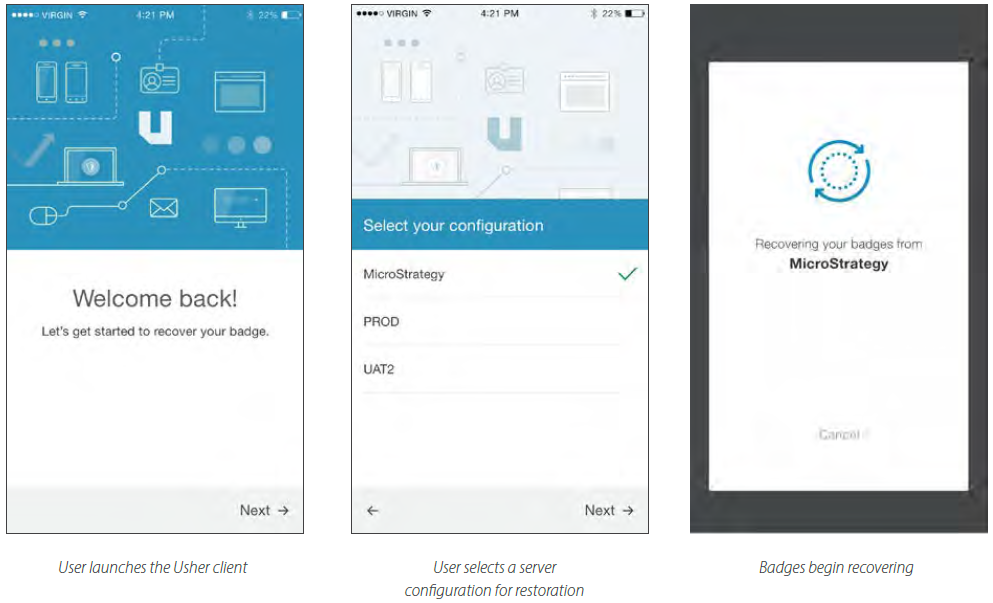

#Dossier in microstrategy pdf
Now, if your desire is to export this into HTML or PDF you can do so with nbconvert.
#Dossier in microstrategy code
This is how the code would look like in the notebook cells: Once you run the cell, the visualization will load and it’s interactive. Var container = document.getElementById("chart1"),Īnd that’s it. Here you will paste the URL to the Dossier from the MicroStrategy Library. In a second cell we use %%javascript to insert our javascript code. In my case, I will be using id="chart1" and id="chart2". If you are embedding more than one visualization, make sure they each have unique ids. The id can be anything, which later you will reference in the Javascript document.getElementById(). We will add to the same cell our tag to create a placeholder for where we would like to embed the Dossier. :8080/MicroStrategyLibrary/javascript/embebddinglib.js"> We then start by referencing the MicroStrategy Javascript library that supports embedding which comes with the install. We will be leveraging %%html and %%javascript in order to embed our Dossier. In addition, there are built-in commands known as IPython Magic commands: Line Magic and Cell Magic. Jupyter also comes with additional tools for exporting and converting the notebooks to other formats such as HTML, PDF, LaTeX. Python is the most popular and common usage.
#Dossier in microstrategy install
You can install different kernels to support languages such as Python, R, Julia, NodeJS, Scala to name few. Jupyter also offers advanced techniques and widgets to make the document more interactive which can be ideal when it comes to sharing these documents with others for training, step-by-step tutorials or sharing knowledge (i.e. You can run each code cell individually (one at a time) and see the output of each cell right underneath that cell. Once your Dossier is published in the MicroStrategy Library you will need to copy the URL for the specific Dossier you want to embed.įor those not familiar with Jupyter Notebook, it is a very popular tool for writing code since you can combine code cells with other cell types such as Markdown or LaTeX (for formatting mathematical formulae). Available on the web and in a dedicated mobile app, the MicroStrategy Library puts answers in users’ hands, wherever they are. This central hub lets users quickly locate the content they need by scanning thumbnail tiles or using our advanced search functionality to locate dossiers, objects, or specific visualizations. What is a MicroStrategy Library?īusiness users can access dossier apps through a simple, personalized interface: the MicroStrategy Library™. Once you have your visualization ready, you will need to publish/save to the MicroStrategy Library. In this case, I created two that I plan to embed. Before we start you will either need to create a new Dossier or use an existing one. In this short example, I will be using the MicroStrategy Tutorial project.


I use Jupyter Notebook a lot especially when I am testing a new idea that I want to code since it allows me to easily document my thinking process add headers and bullets all using markdown and few needed keyboard shortcuts (Literate Programming). The new shift toward Embedded Analytics was exciting, so I wanted to test out how easy would it be to embed MicroStrategy with one of my favorite tools, Jupyter Notebook. mstr file to other users.After attending MicroStrategy World at the Cosmopolitan in Las Vegas one message stuck in my mind from watching the demos: What we can do with the platform is only limited by our imagination. Use this option to allow or deny certain types of access to users or user groups. Choose Share > Manage Security Access to manage the security access for your dossier.You can notify newly added users via email by selecting the Notify newly added users via email checkbox. Select the appropriate users or user groups and click Done. Start entering a name to locate a particular user or user group. Copy the URL link to send it to other users.Ĭhoose Share > Library Access to send your dossiers to other user's libraries by adding users or user groups. Choose Share > Get Link to generate a link for sharing a single dossier.You can share up to 100 dossiers at the same time. Press and hold the Ctrl key to select multiple dossiers. Right-click the dossiers you want to share.

In the Navigation pane, click Dossiers.Open Workstation with the Navigation pane in smart mode.This allows other users to access them through a. You can share dossiers in your cloud environment.


 0 kommentar(er)
0 kommentar(er)
